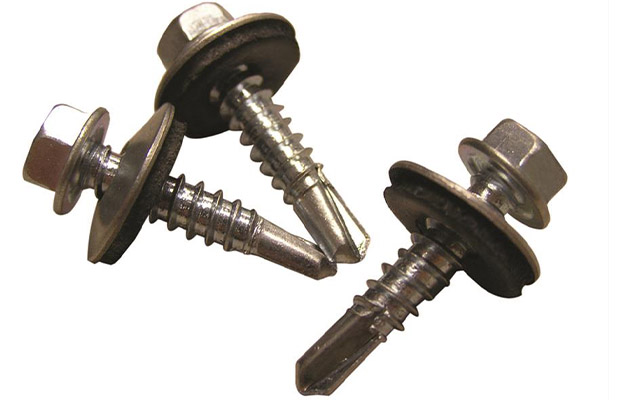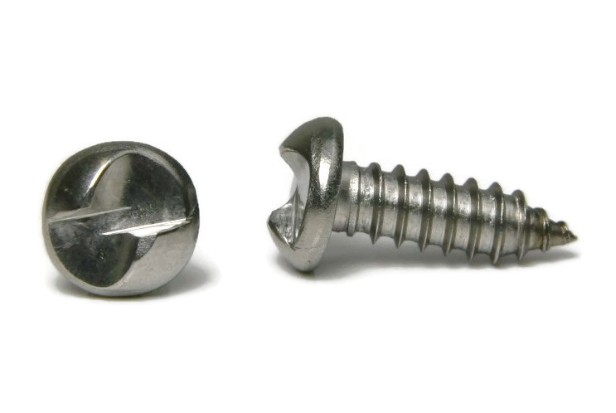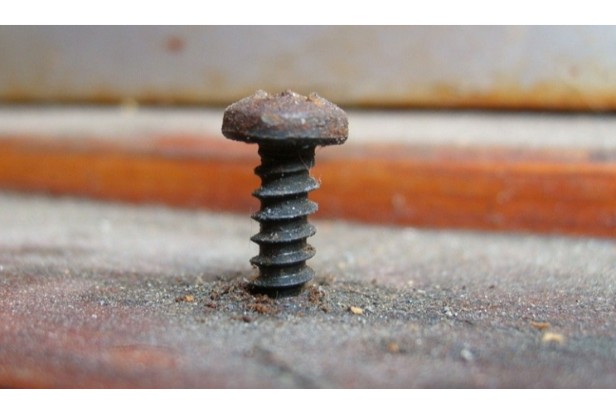
In addition to many other applications and industries, self-tapping and self-drilling screws are two kinds of screws used in general construction and metal building. Contrary to popular belief, the two terms are not interchangeable. Frequently, when they really mean self-drilling screws, our customers ask for self-tapping screws instead.
To make these distinctions clear, let’s examine these two products independently.
Table of Contents
Self-tapping Screws
There are several names for self-tapping screws. They are frequently referred to as metal screws, sheet metal screws, tapping screws, or tapper screws.
They can be described as thread-forming, thread-cutting, or thread-rolling, and their tips can be pointed (like a pencil), blunt, or flat. The screw will be thread-cutting or tapping and creating threads in a hole that has already been drilled if it is pointed. The process of rolling or extruding threads with zero clearance between the screw and the material is known as thread-rolling if the tip is flat.
The most important difference between self-tapping and self-drilling screws is that self-tapping screws cannot go through metal without a pilot hole, which must be pre-drilled or pre-punched.
A further consideration is the precise drill or punch hole size. If the hole is too large, the screw will lose its tight threading and become unfastened. The screw may break, split, or crack the material if the hole is too small.
Self-tapping screws work well with metals, various plastics (such as plywood, fiberglass, and polycarbonates), and forged or cast materials such as iron, aluminum, brass, or bronze. Self-tapping screws are useful for surfaces where a nut can’t be used to secure the back end. Common uses for fasteners include joining aluminum pieces, securing metal brackets to wood, and screwing into plastic housings.
Self-drilling Screws
Self-drilling screws are occasionally referred to as Tek® Screws. These screws are distinguishable by their point, which resembles a drill bit. They are made for a variety of uses, including joining metal and wood. Self-drilling screws can be installed more quickly and with fewer drill bits because they don’t need a pilot hole. Self-drilling screws are the obvious choice for metal building construction due to their added functionality and cost-saving feature. The drill points have numbers #1 through #5, and as the number of the points increases, so does the amount of steel that can be penetrated. Typically, self-drilling screws are used in light gauge applications but a #5 drill point can drill through and fasten up 1/2″ of steel. Self-drilling screws will tap threads slightly while being installed.
Similarities And Differences
The fact that both of these screw types create threads as they pierce the material being worked with is what unites them the most. When rivets or nuts and bolts can’t do the job, both steel on steel and steel on wood can be attached.

Self-drilling screws, however, stand out from the competition because they save time and money during assembly and reduce installation error, which frequently occurs when pre-drilled holes are the wrong size.
Final Words
In short, and this is where the confusion lies, all self-drilling screws are also self-tapping screws, but all self-tappers are not self-drillers. Self-drilling screws not only do not require a pilot hole, but they can also tap. Self-tapping screws require a pilot hole because they cannot drill through metal and must tap their own threads. Because these screws cannot be used interchangeably, doing so may result in numerous problems or even field failures.
In order to avoid future confusion, keep in mind that while all self-drilling screws are also self-tapping, not all self-drilling screws are also self-tapping.
You May Also Like:
FAQs
How Do I Determine The Size Of The Screws I Need?
You can usually determine the correct screw size by trying different ones until you find one that works. The thickness of the material and the finish you require should be taken into consideration. Keep in mind that it is simpler to enlarge a hole than to enlarge a hole, which is another important point.
Does The Screw’s Size Matter?
It may be hazardous to choose the incorrect size screw for the job. The incorrect screw is one that is too long or small for the task at hand. If the screw is too loose or doesn’t completely disappear (head type dependent), you should remove it and replace it with one of a better type.
Can I Screw In Sheet Metal To Wood?
The first course of action should be to use the proper screw type for your application. Metal screws can be used in wood, but because of their flexibility, wood-specific screws are preferable.
Does Sheet Metal Accept Wood Screws?
No, metal screws’ tensile strength is different. Never use wood screws; only use metal ones.
Do Exterior Screws Work With Indoor Ones?
If a screw has been galvanized or is marked for “exterior use,” it may be used both inside and outside. Galvanized screws have a protective coating to withstand rain, so they won’t rust or corrode as quickly.


